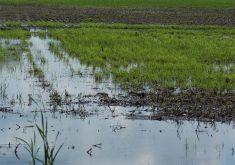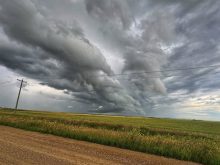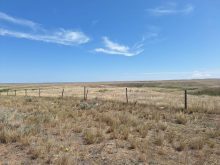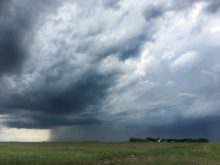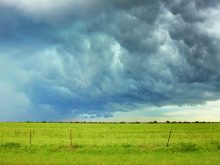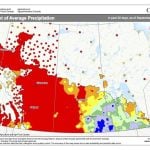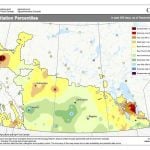Drought was a mixed bag for Prairie producers, with not much room for improvement promised by the July forecasts.
Precipitation levels were highly variable last month with large storm events tracking through central Alberta and Saskatchewan.
In contrast, large portions of the southern prairies and northwestern Alberta received very little precipitation.
A late June dry spell throughout the region hampered what is normally the month that receives the most precipitation of the year.
“June is also a critical period for crops and pastures, so if we don’t receive adequate precipitation in June, it is very difficult to make up that moisture in July,” said Trevor Hadwen, agroclimate specialist with Agriculture Canada.
Read Also
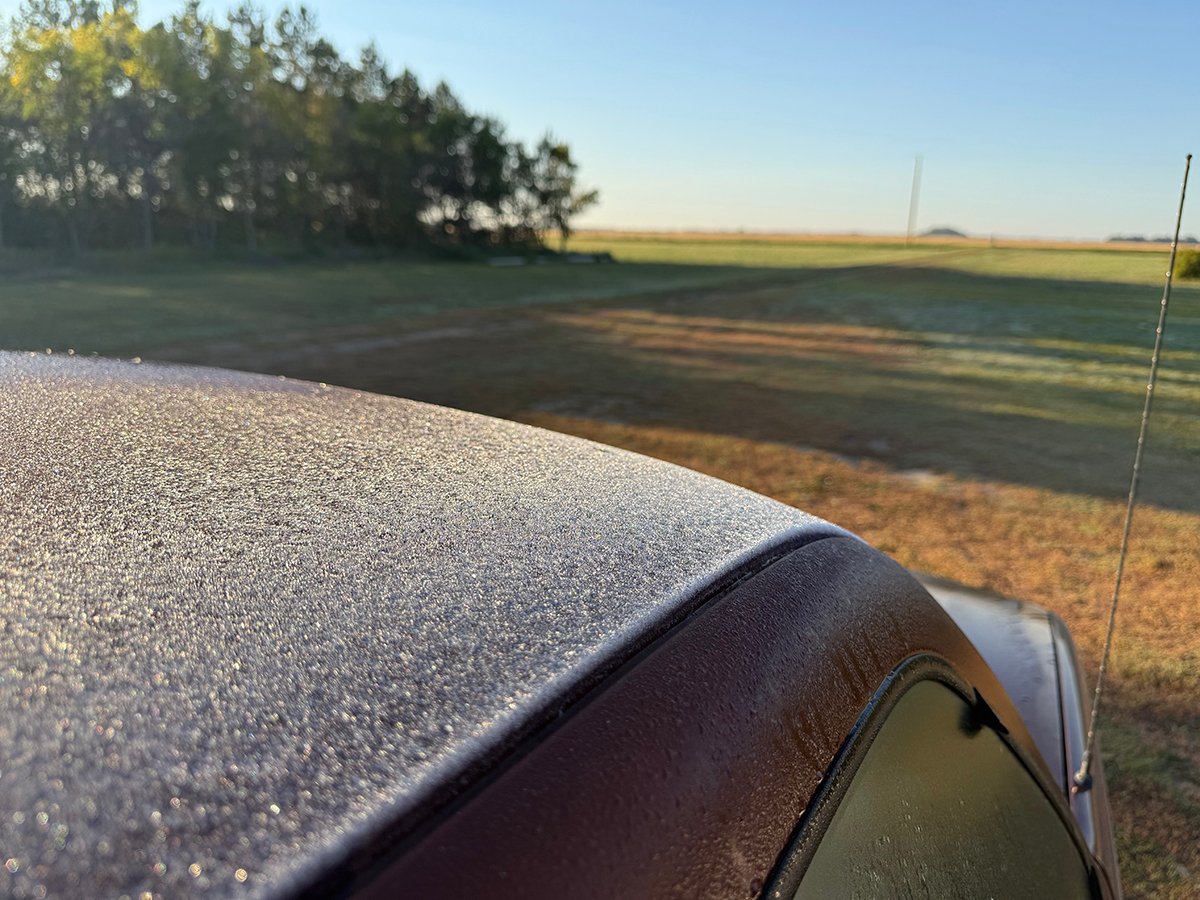
Frost-free season lengthens this year
Saskatoon, Edmonton, and Dauphin saw their frost-free season range from 131 to 135 days, which is about 15 to 20 days longer than average.
The department supplied the following question and answer session with Hadwen as part of the June Drought Monitor report:
What has changed since May?
The drought conditions in the Prairie region have changed significantly in the past month. Large regions of central Alberta and central Saskatchewan received substantial precipitation in June, providing much needed moisture and improving the drought condition. The southern Prairies as well as northwestern Alberta received very low precipitation through June, along with hot, windy, dry conditions, which have led to the development of significant drought conditions. This includes southern Saskatchewan, southeastern Alberta and south-central Manitoba. The Peace River region of Alberta continued to receive well below normal precipitation, further degrading conditions in that region.
What areas have had the most significant change?
This last month, we saw significant improvements through central regions of Alberta and west-central Saskatchewan, as well as the northern regions of Saskatchewan. However, most significant changes have been seen in southwestern Saskatchewan and parts of eastern Alberta. June was a exceptionally dry month for this region, and conditions degraded very quickly. Most of the region recorded under 20 millimetres of precipitation in June, which is one-third their normal precipitation amounts. Large portions of southwestern Saskatchewan are now rated as severe drought with a smaller pocket in the Maple Creek region being rated as extreme.
What areas are you most concerned about?
We remain concerned about large portions of the Prairie region. What started out as a promising spring quickly turned into another dry year for much of the Prairie region. The Peace River region remains extremely dry, and livestock producers, as well as crop producers, are struggling. Southern regions of Alberta and Saskatchewan, especially southwestern Saskatchewan, where conditions have quickly deteriorated, are a significant concern. While Manitoba continues to hold on due to better soil moisture reserves and timely rains, poor precipitation continues to deteriorate conditions through much of the province.
What is the update for southwestern Saskatchewan?
Southwestern Saskatchewan has seen well below normal precipitation this growing season, leading to some very severe drought conditions. Many rural municipalities in this region have declared states of agricultural disaster. Producers in this region have reported pastures that have gone dormant and some crops are being turned into grain feed. Many producers are being forced to reduce or relocate their herds due to lack of poor pasture productivity. Rainfall is certainly welcome in this region. However, it may be too late to salvage many of the crops in the driest regions.
What is the update for southern Alberta?
Most of southern Alberta continues to deteriorate, However, parts of southwestern Alberta received some significant precipitation this month, improving water supplies and soil moisture reserves. Conditions through southern Alberta are not as severe as southern Saskatchewan. However, dryland producers are seeing crop maturity events quicker than normal, and drought stress in crops. Pastures have dried up in many of the regions.
What is the update for central Alberta and Saskatchewan?
Central Alberta and west-central Saskatchewan received significant precipitation from a few large storm events late in June, resulting in over 50 mm of precipitation for the region. Even with the significant rain events, producers throughout the region are still reporting impacts from drought. In addition to large rainfall events in central regions Alberta and Saskatchewan, agricultural regions in northern Saskatchewan improved significantly this past month. We saw severe and extreme drought conditions shrink considerably due to good precipitation and improved moisture conditions in this region.
What is the update for southern Manitoba?
Southern Manitoba continues to receive well below normal precipitation, leading to widespread expansion of drought. What precipitation occurred in Manitoba has been scattered and fairly localized, therefore conditions are highly variable. Some regions of Southern Manitoba recorded their fifth driest June on record, including Winnipeg. The majority of producers are not reporting any significant concerns at this time, as the region had good soil moisture reserves going into the growing season. At the end of June, the majority of the province was rated in a moderate drought with a severe drought rating in the Interlake region.
What are you expecting to see in July?
In the Prairies, we typically receive less precipitation at increased temperatures, resulting in continued moisture loss. Environment and Climate Change Canada is suggesting a moderate probability of temperatures being above average. Precipitation is highly variable. However, most of the region is not showing a likelihood of significant precipitation. Based on these forecasts, the chance of improvement in July is low.






